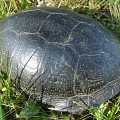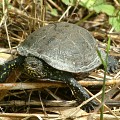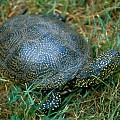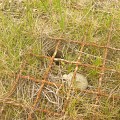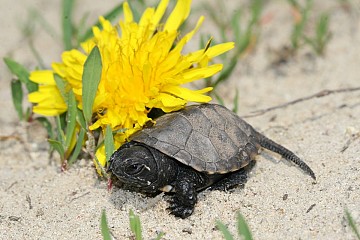
The EUROPEAN POND TURTLE’s ground colour may vary widely: carapace, head and limbs mostly greenish-black but dark brown, rusty and almost black but sometimes dark brown, rusty and almost black, with white or yellow speckles or short streaks. Plastron light brown or brownish yellow, sometimes off-white, with dark brown patches; scutes sometimes with black edges. Plastron of males slightly concave and with grooves, in females flat. Tail thicker in males than females. Iris of males varies from orange to reddish-brown, in females it is yellow or whitish. Newly hatched young are very small (shell often less than 2 cm), black with long tail, becoming more vivid in colour than adults as they grow.
Distibution map by our National Herpetological Mapping Program:


